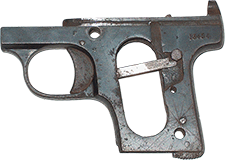Home | Glossary | Resources | Help | Contact Us | Course Map
Archival Notice
This is an archive page that is no longer being updated. It may contain outdated information and links may no longer function as originally intended.
In its simplest form, milling is an advanced process that moves the part against a stationary rotating cutting tool. The part is held in a precision block with at least three dimensions of motion. Length, width, and height can be adjusted from the movement of the block. More advanced blocks add three additional axes of motion. They are equivalent to the roll, pitch, and yaw of an aircraft. Machinists like to say that the mill is the only machine that can produce all other required machining needed for a productive metal-working operation.
Because of the freedom of motion and the precision of the machinery, milling can create parts with complex contours. The cutting tools vary with the task. A simple hole can be drilled with a mill. However, the working surfaces of many milling tools are located on the side to allow facing large areas with precision or they may have cutting edges on the tip, side, and top to produce slots. If a large number of the same part is to be made, the tooling designer can fabricate a custom mill cutter that produces a specific shape.
Milling can be used to position multiple cuts separated by some angle. For a six-shot cylinder, the locking notches on the outside of a revolvers cylinders can be cut with one tool by moving the part holder sixty degrees after each cut.
For a complex component like a firearms receiver, milling provides the designer with flexibility. A raw forging passed through a series of mills is reduced to a usable gun component. This can be repeated thousands of times. Uniformity of parts is a key to successful firearms production. Without milling, the mass production of firearms and most other metal product cannot exist. It replaces slow handwork operations with high-volume and precision.
The following is a partial list of key firearms components that are routinely milled and can leave identifiable marks on a cartridge case:
- Breech faces
- Extractors
- Ejectors
- Ejection ports
- Noncircular firing pins (e.g., rimfire arms)
- Cartridge guides
Additional Online Courses
- What Every First Responding Officer Should Know About DNA Evidence
- Collecting DNA Evidence at Property Crime Scenes
- DNA – A Prosecutor’s Practice Notebook
- Crime Scene and DNA Basics
- Laboratory Safety Programs
- DNA Amplification
- Population Genetics and Statistics
- Non-STR DNA Markers: SNPs, Y-STRs, LCN and mtDNA
- Firearms Examiner Training
- Forensic DNA Education for Law Enforcement Decisionmakers
- What Every Investigator and Evidence Technician Should Know About DNA Evidence
- Principles of Forensic DNA for Officers of the Court
- Law 101: Legal Guide for the Forensic Expert
- Laboratory Orientation and Testing of Body Fluids and Tissues
- DNA Extraction and Quantitation
- STR Data Analysis and Interpretation
- Communication Skills, Report Writing, and Courtroom Testimony
- Español for Law Enforcement
- Amplified DNA Product Separation for Forensic Analysts


